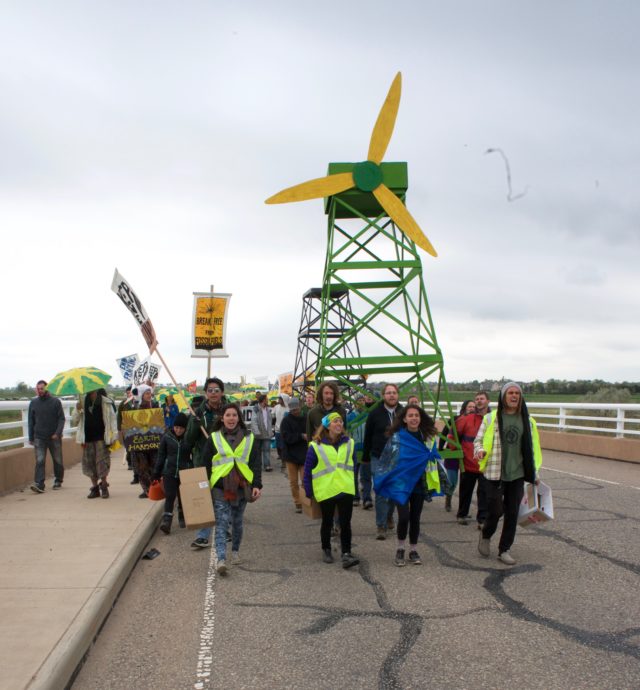
Across the globe, the movement to ban fracking is growing. France, Germany, Scotland, Ireland and the Netherlands have stopped this dangerous practice. So have New York, Vermont, Maryland and many municipalities in the United States.
These victories are the result of vigorous community organizing by grassroots progressives. For example, New York Governor Andrew Cuomo decided to ban fracking in 2014 shortly after an opponent, Zephyr Teachout, won over 34 percent of the vote in the Democratic primary. A Cuomo staffer tweeted right after the election that one of the “big takeaways” was the popularity of Teachout’s strong anti-fracking stand.
Teachout, a progressive populist Fordham University law professor, also took stands against “too big to fail” banks, big money in politics and school privatization. She wasn’t very well known, ran her campaign on a shoestring budget and entered the race rather late. Cuomo, an establishment Democrat with politics similar to John Hickenlooper, refused to debate her and spent generously from his $40 million campaign war chest.
Jessica Mason of PR Watch reported that Teachout was popular in rural upstate New York where people were organizing against fracking. She said that “dozens of towns across New York have considered banning fracking through zoning ordinances, a move the New York Supreme Court ruled legal in late July. Bans have passed in some 79 municipalities in New York state, concentrated in upstate counties like Otsego and Tompkins, both of which gave over 70 percent of their vote to Teachout.”
Unfortunately in Colorado, the battles against fracking haven’t been as successful because the oil and gas industry has enormous clout in the state. Boulder Weekly has amply documented this influence. Last July, Denver Post reporter Christopher Osher also noted:
“The oil and gas industry in the past four years has poured more than $80 million into Colorado to shape public opinion and influence campaigns and ballot initiatives, creating a political force that has had broad implications throughout the state.”
Denver was number three in a survey of the top 10 oil-and gas-cities in the world done by Rigzone, an online industry news and analysis publication based in Houston. Number one was Dubai, the booming United Arab Emirates city that is the hub for the oil and gas industry in the Persian Gulf. The second-ranked city was Calgary, Alberta, which is the center of Canada’s energy industry.
The list came from a poll of 8,000 industry executives and engineers focused on the places with oil-and-gas industry growth and opportunities.
The opportunities are in Colorado’s tight sands and shale formations — especially the oil-rich Niobrara shale, which stretches through most of northern Colorado and eastern Wyoming, as well as into parts of Kansas and Nebraska.
Niobrara may hold a reserve equal to as much as 2 billion barrels of oil, according to the Colorado Oil and Gas Association.
As the industry gears up for a fracking boom in Colorado, it is easy to sink into despair or cynicism — at least for those of us who aren’t living close to the drilling with its air, water and noise pollution. With Trump as president, there is an ironic hope that his extreme anti-environmentalism will spark a serious rebellion. As Bill McKibben says, “Trump has pissed people off, and pissed-off people don’t ask for small and easy progress. They demand the shifts that reality requires. In this case, winning slowly is the same as losing, so we don’t want to substitute one for the other.”
With climate change accelerating, we don’t have time for the incrementalism of President Obama with his “all of the above” energy policy. We have to demand a 100 percent renewable economy. In April, Senators Bernie Sanders and Jeff Merkley introduced a 100 percent bill. The Sierra Club has started a #ReadyFor100 campaign to lobby cities to commit to 100 percent renewable energy. So far, 150 mayors in 33 states in all regions of the country have joined this initiative. The U.S. Conference of Mayors has endorsed the drive.
Mark Jacobson, director of Stanford University’s Atmosphere and Energy Program, has published papers which argue that wind, solar and hydropower (with small amounts of geothermal and tidal power) could supply all global energy needs by the 2050s.
Fossil fuels have to stay in the ground. That means the oil and gas industry has to relinquish trillions of dollars of wealth. Naomi Klein says, “We are left with a stark choice: allow climate disruption to change everything about our world, or change pretty much everything about our economy to avoid that fate.”
That change won’t come without a big fight.
This opinion column does not necessarily reflect the views of Boulder Weekly.














